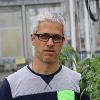Biostimulants as Physiological Modulators of Crop Performance and Product Quality
A special issue of Agronomy (ISSN 2073-4395). This special issue belongs to the section "Horticultural and Floricultural Crops".
Deadline for manuscript submissions: closed (31 May 2022) | Viewed by 87743
Special Issue Editors
Interests: greenhouse crops; vegetables production; hydroponics and aquaponics; plant nutrition; microgreens; sprouts; edible flowers; functional foods; grafting; microbial and non-microbial biostimulants; biofortification; vegetable quality related to preharvest factors; LED; urban agriculture; organic farming
Special Issues, Collections and Topics in MDPI journals
Interests: microgreens; sprouts; functional food; crop production; plant nutrition; fertilizers; organic farming; organic agriculture; nutrient management; biofertilizers; vegetable production; fruit quality; fertigation; hydroponics; vegetable crops; biofortification
Special Issues, Collections and Topics in MDPI journals
Special Issue Information
Dear Colleagues,
The world’s horticultural systems face a great balancing act between two needs, on one side to raise the supply of food produced on the available farmland, since the global population will increase to more than 10 billion by 2050, and on the other side to reduce agriculture’s impact on the environment and human health. Meeting these two targets presents a major sustainability challenge to scientists and producers, which might be fostered by using natural products known as plant biostimulants. A plant biostimulant has recently been defined in the regulations (EU) 2019/1009 of the European Parliament and Council (EC) as an “EU fertilising product able to stimulate plant nutrition processes independently of the product’s nutrient content with the sole aim of improving one or more of the following characteristics of the plant or the plant rhizosphere: 1) nutrient use efficiency, 2) tolerance to abiotic stress, 3) quality traits, or 4) availability of confined nutrients in the soil or rhizosphere”. Plant biostimulants, by this definition, include several substances with bioactive properties: seaweed and plant extracts, humic and fulvic acids, protein hydrolysates and silicon, as well as some-plant growth-promoting microorganisms: mycorrhizal fungi and plant-growth-promoting rhizobacteria.
Following the huge success of the first Special Issue, “Toward a Sustainable Agriculture Through Plant Biostimulants: From Experimental Data to Practical Applications”, we have decided to launch a second Special Issue entitled “Biostimulants as Physiological Modulators of Crop Performance and Product Quality”. This Special Issue invites original research, technology report, methods, opinion, perspectives, and invited reviews and mini reviews dissecting the biostimulation action of these natural compounds and substances and beneficial microorganisms on crops grown under optimal and suboptimal growing conditions (e.g., salinity, drought, nutrient deficiency and toxicity, heavy metal contaminations, waterlogging, and adverse soil pH conditions). Also of interest are potential contributions dealing with the effect as well as the molecular and physiological mechanisms of plant biostimulants on nutrient efficiency, product quality, post-harvest, and the modulation of the microbial population quantitatively and qualitatively. In addition, identification and understanding of the optimal method, time, rate of application, and phenological stage for improving plant performance and resilience to stress as well as the best plant species/cultivar × environment × management practices combinations will be considered within the general scope of the Special Issue. We strongly believe that this compilation of high-standard scientific papers on principles and practices of plant biostimulants will foster knowledge transfer among scientific communities, industries, and agronomists and will enable a better understanding of the mode of action and application procedure of biostimulants in different cropping systems.
Prof. Youssef Rouphael
Prof. Giuseppe Colla
Guest Editors
Manuscript Submission Information
Manuscripts should be submitted online at www.mdpi.com by registering and logging in to this website. Once you are registered, click here to go to the submission form. Manuscripts can be submitted until the deadline. All submissions that pass pre-check are peer-reviewed. Accepted papers will be published continuously in the journal (as soon as accepted) and will be listed together on the special issue website. Research articles, review articles as well as short communications are invited. For planned papers, a title and short abstract (about 100 words) can be sent to the Editorial Office for announcement on this website.
Submitted manuscripts should not have been published previously, nor be under consideration for publication elsewhere (except conference proceedings papers). All manuscripts are thoroughly refereed through a single-blind peer-review process. A guide for authors and other relevant information for submission of manuscripts is available on the Instructions for Authors page. Agronomy is an international peer-reviewed open access monthly journal published by MDPI.
Please visit the Instructions for Authors page before submitting a manuscript. The Article Processing Charge (APC) for publication in this open access journal is 2600 CHF (Swiss Francs). Submitted papers should be well formatted and use good English. Authors may use MDPI's English editing service prior to publication or during author revisions.
Keywords
- humic acids
- microbial inoculants
- PGPR
- nitrogen-fixing bacteria
- mycorrhizal fungi
- microbiome
- protein hydrolysate
- silicon
- physiological and molecular mechanisms
- seaweed extracts
- microalgae
- functional biostimulants
- agronomical and horticultural crops
- abiotic stressors
- NUE
- post-harvest






